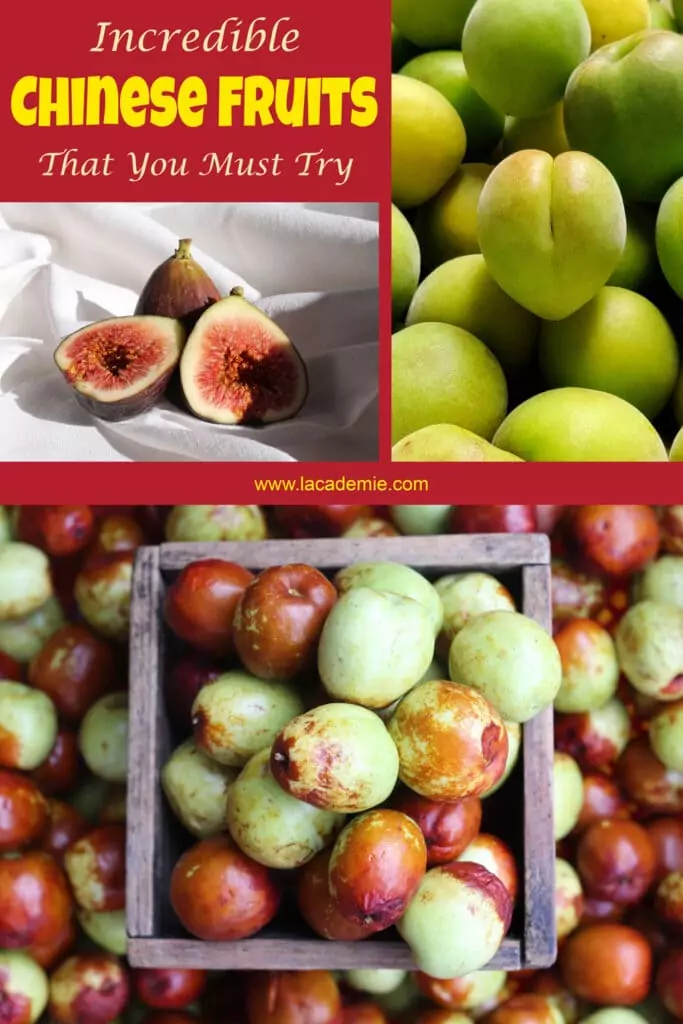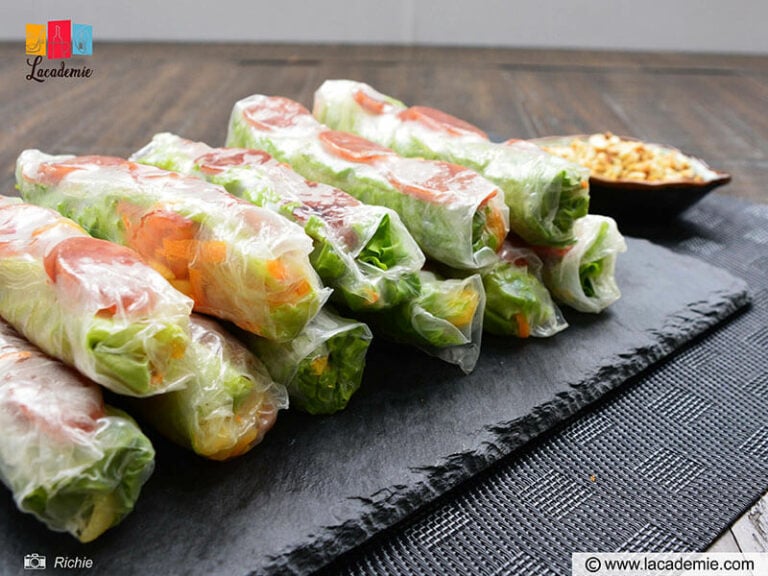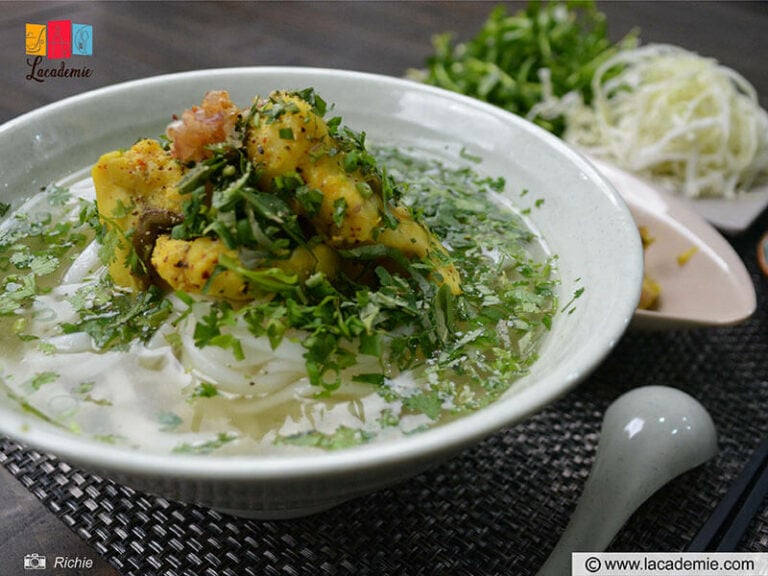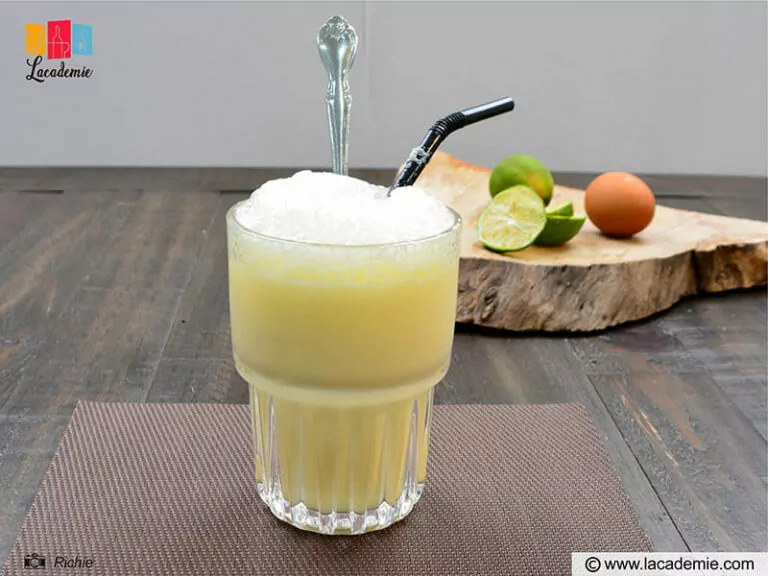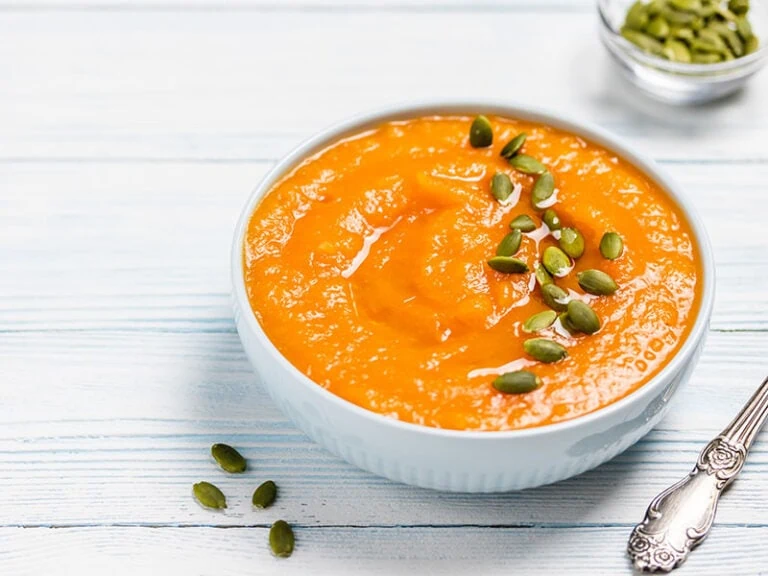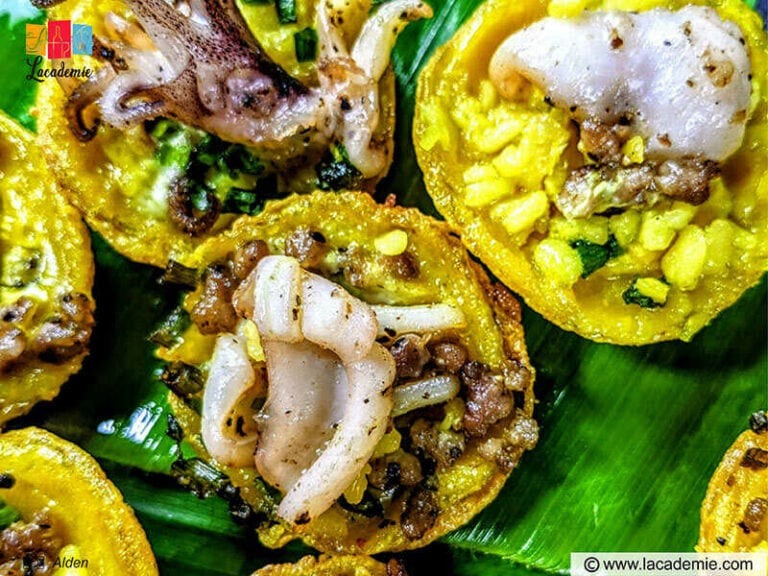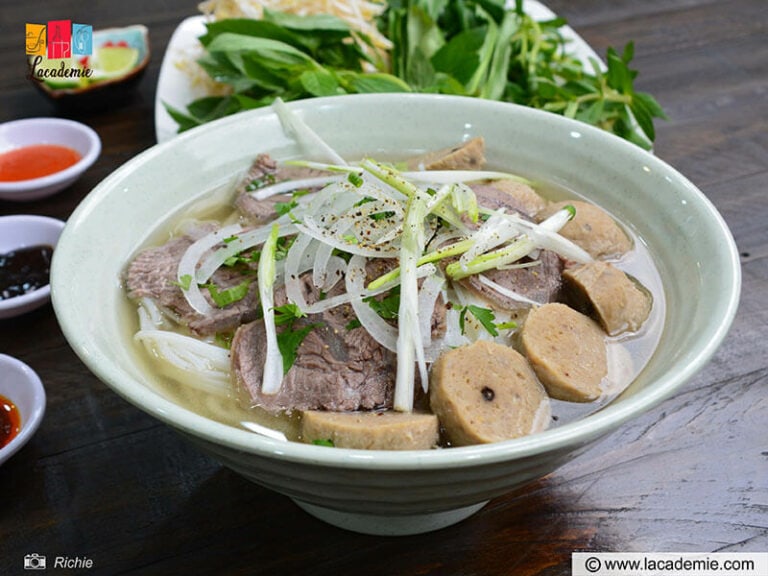Chinese fruits are incredibly tasty. Some of them come in odd appearances that you will never forget. And what’s more? All these fruits have certain nutrients to make your health better.
Besides the beauty of authentic Chinese foods, Chinese fruits are exotic and deserve to be discovered. In this post, I also provide their Chinese names so you can learn and buy them easier whenever you visit China.
So let’s get started and learn new things about the ultimate list of 25 Chinese fruits here.

What Are The Drupe Fruits In The Chinese Fruit Menu?
As you know, fruits that belong to the drupe category come with a single large seed in the center, covered by an outer flesh. Based on these botany characteristics, here are 5 special Chinese fruits in this fruit group.
1. Bayberry (杨梅 – yángméi)
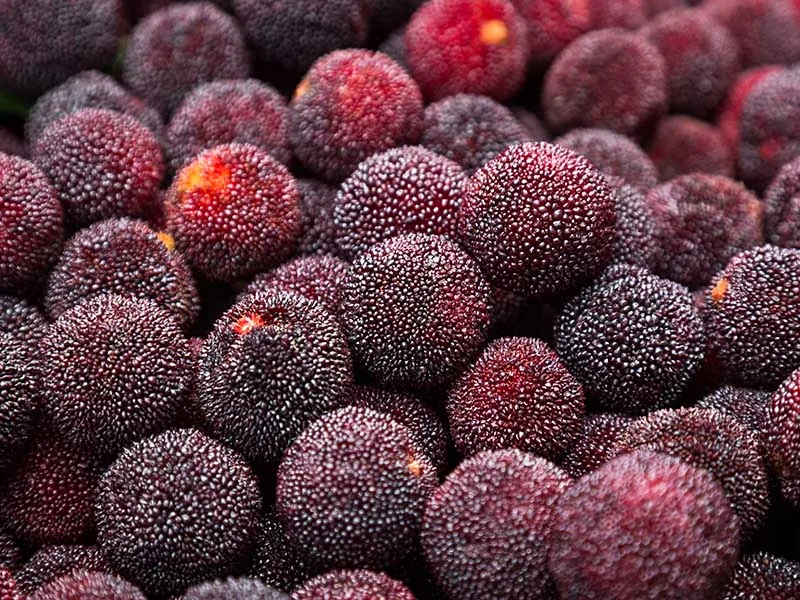
Chinese bayberry (or myrica rubra, yumberry, waxberry, etc.) is native to Eastern Asia. Most of them can be found in the south-central parts of China, like Guangdong, Hainan, Yunnan, Fujian, etc. People also spot them in the forest on mountains in Korea, Japan, and the Philippines.
Ripe bayberry fruits have a dark red or purplish-red color with round shapes and medium sizes. Some fruits are also large with around 1.6-inch in diameter.
They have a sweet-and-tart flavor with high nutrients, like vitamin C and antioxidants. That’s why the Chinese have been collecting them for medical purposes for decades.
Their flavor is also complex as it combines the taste of cranberry, strawberry, pomegranate with an orange-like texture. People can consume bayberry fresh, make juice, prepare canned fruit, dry, and soak them in baijiu – a distinct Chinese drink with alcohol, or ferment them to make beer and wine.
Nutrients: Rich in vitamin C, antioxidants, carotene, thiamine, and riboflavin.
Season: Fruits start to develop from May to June in China.
How To Eat: Best to enjoy fresh. Ensure you choose dark-color berries as these are ripe ones. Wash before using and discard their small pits.
Check here for more information about the strange texture yet delicious taste of Chinese bayberries.
2. Lychee (荔枝 – lìzhi)
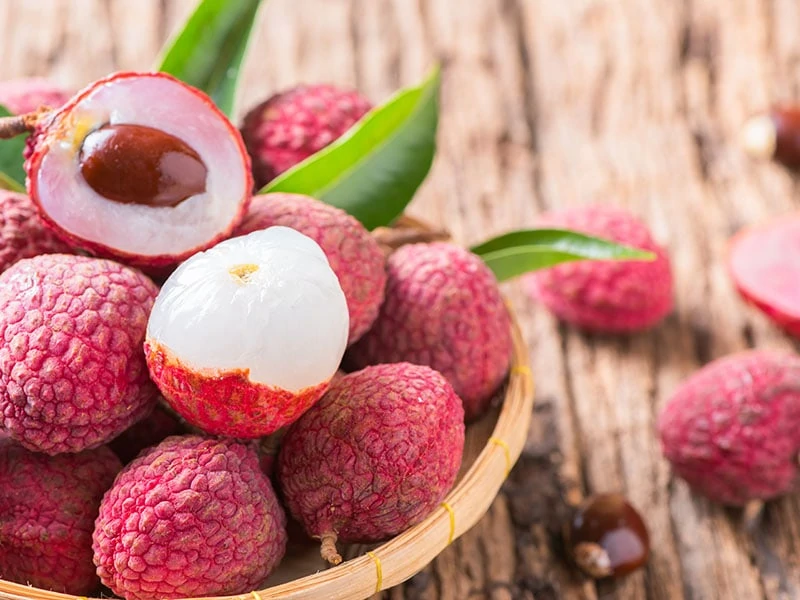
Lyche is an evergreen tree with an approximate height of 49 feet. They are small fleshy fruits that are sweet, extremely juicy with a light floral note. And China is the biggest lychee supplier in the world, next to India and some Southeast Asian countries.
Indeed, lychee originates from Guangdong, Yunnan, and Fujian in China. They are a typical tropical fruit in the drupe classification. When mature, the opaque white pulp of lychee is covered by a thin rough-textured skin with red or pink-red color.
Lyche is also a good source of vitamin C (around 72 mg/100 grams). However, you have to pay more attention to their seeds. The MCPG (hypoglycin A) in these seeds can cause low blood sugar, vomiting, or other illness.
And if you have kids, you should never let them consume a large amount of lychee with empty stomachs. But if you eat them properly, they are totally safe.
Nutrients: Vitamin C, B6, calcium, magnesium, phosphorus, potassium, dietary fiber, folate, etc.
Season: Begin in May (or June) until summer or late September.
How To Eat: Eating raw is best by peeling their thin skin and enjoying the flesh. Do not eat their seeds.
Come to Guangdong and taste the sweetness of lychee!
3. Longan (龍眼 – lóngyǎn)
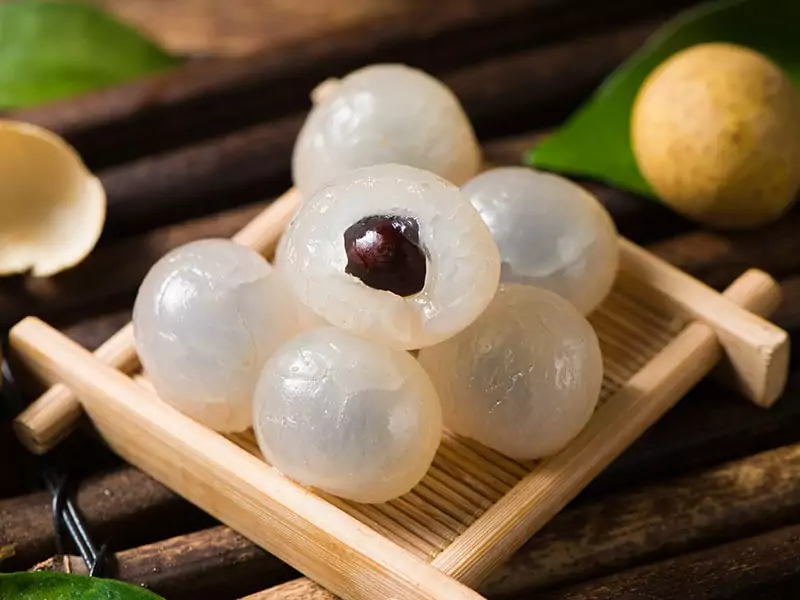
Longan is a native fruit to tropical China and Asia. As they belong to the same family of lychee and rambutan, longan fruits share some similar characteristics to these fruits. First, they are also a drupe fruit with a small hard pit inside, covered by edible translucent pulp.
However, their skin color varies from yellow to light brown. The skin is also thin and quite leathery. As the flesh is translucently white with black seed, it assembles an eye. Therefore, in Cantonese, longan is “lùhng-ngáahn” meaning “dragon eye”.
Though this fruit might have a long history in China, they are quite new to other places in the world. But generally, longan is a friendly fruit with a sweet taste that is somewhat similar to the lychee flavor.
They are best eaten fresh, or you can use them to make various sweet Chinese-style desserts or snacks. The locals also dry them for longer uses.
Nutrients: Contain vitamin C, riboflavin (vitamin B2), and potassium.
Season: Normally from July or August in China.
How To Eat: You can remove its shell by taking a light bite on it (or using a knife to cut them in half), then squeezing the flesh out of the skin to eat. Remember to discard the seed inside.
It is extremely easy to know the right way to eat longan.
4. Green Plum (青梅 – oume)
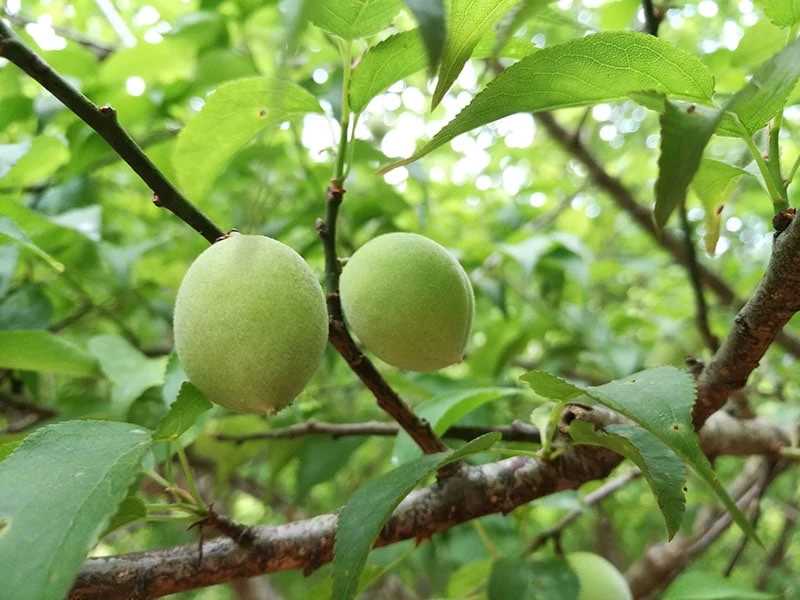
The scientific name of green plum is Prunus mume, which refers to a Southeast Asian and East Asian tree. Though they have an English name as plum, they are more related to the apricot.
It is a widely-known fruit in China, particularly Fujian. The origin of green plum is around the Yangtze River in the south of the country. Today, their popularity has spread to other neighbors like Taiwan, Japan, and Korea.
In China, you can find more than 300 green plum varieties. However, as their flavors are quite sour and bitter, people mostly use them to make juices. A famous Chinese drink – Suanmeitang (means “sour plum soup”), uses the smoked unripe or ripe plum and is sweetened with sugar.
On the other hand, these fruits are also perfect for making sauces, pickles, preserved foods, and even wines.
Nutrients: Include various vitamins like vitamin A, C, K, and other minerals such as sodium, potassium, calcium, etc.
Season: Start to ripe in early summer (from June or July in East Asia).
How To Eat: Not recommended to eat fresh. Instead, turn them into juices, beverages, sauces, pickles, or alcoholic drinks.
5. Rambutan (红毛丹 – hóng máo dān)
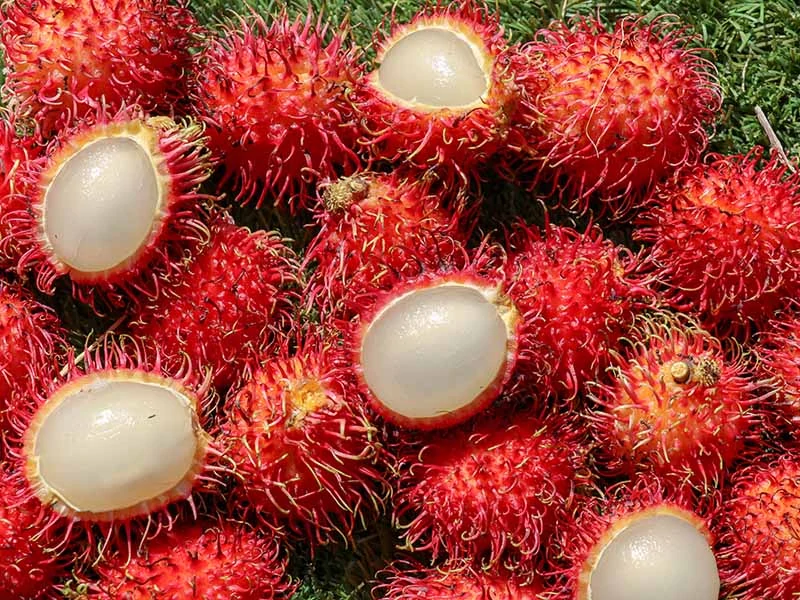
If you love lychees and longans, I guarantee you will love rambutan too. These fruits are native to Indonesian-Malaysian areas and have become a favorite food in many Southeast Asian countries.
Rambutans are medium-sized fruits with a round to oval shape. Their skin is red with a lot of small soft hairs surrounding it. That’s why they have the name “rambutan”, derived from the word “rambut” which means hair in Malay.
But inside these hairy peels are delicious white flesh with a light acidic scent similar to grapes. Their single seed is quite big in the middle to ensure you will discard them when enjoying. And they are best to eat when ripe, ranging from yellow to red colors.
Nutrients: Vitamin A, C, calcium, folate, magnesium, calcium, potassium, copper, and manganese.
Season: Can produce fruit twice a year (in late fall and early winter) in some regions.
How To Eat: Would be better to consume them fresh by cutting the peel in half to get the flesh out of the fruit and enjoy them. Remove the seed as well.
Here is a quick flavor test of rambutan that you should check.
6. Jujube (红枣 – hóngzǎo)
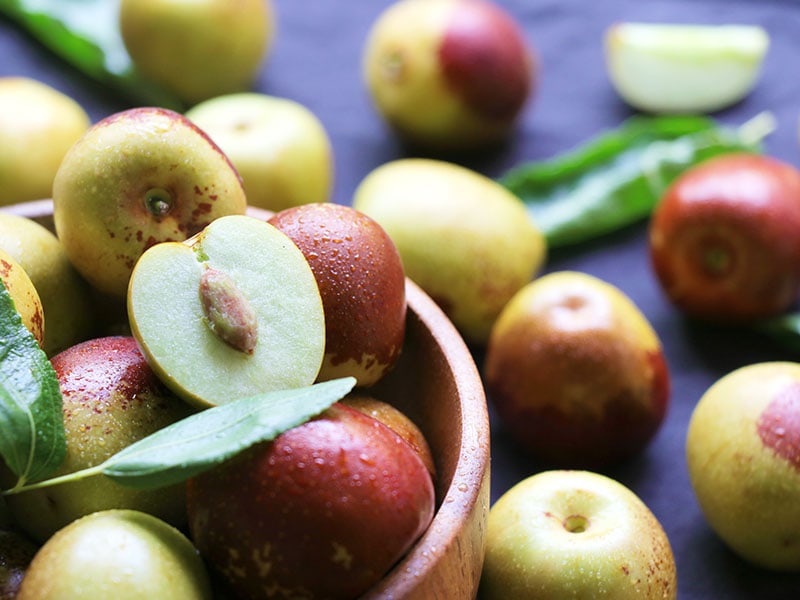
The last special Chinese fruit in the drupe class is jujube. You can use its other names like red date or Chinese date; all refer to a small round fruit that might appear wrinkled when mature.
Moreover, their color varies from smooth green when unripe to dark red to brown (or purplish-black) when ripe. And thanks to their sweet taste with a spongy and crispy texture like apples, they are an ideal fruit to dry and make candies in China and other Asian nations.
They also have a woody and musky aroma, creating tasty snacks to enjoy alone or with coffee. This fruit is an important ingredient in a classic Chinese dish – Jing Gao (steamed rice cake). Plus, people also produce jujube tea or jujube tea syrup in cans, jars, and teabags.
Nutrients: Good source of vitamin C, antioxidant compounds, and a fair level of potassium.
Season: In winter (ripe from early October). But they are also available all year in dried form.
How To Eat: Eat them raw. No need to remove the skin, but you have to toss away their pit.
The documentary will show you the importance of red jujubes in Chinese lives.
3 Heavenly-sent Citrus Fruits That You Can Find In China
The next part is about the 3 citrus fruits you can find in this country. Citrus fruits are numerous. They all have a thick rind and pulpy flesh. So read on and explore them!
7. Pomelo (柚子 – yòuzi)
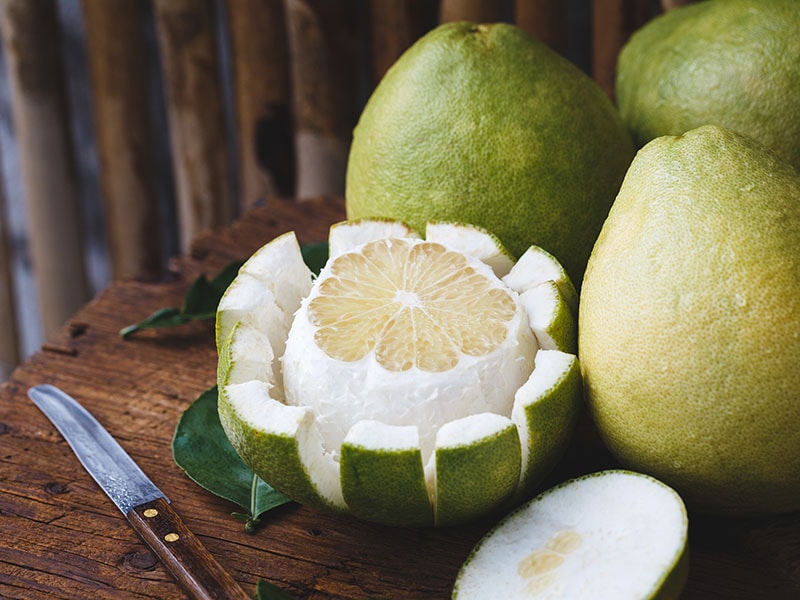
Pomelo has always been my favorite fruit, thanks to its delicate floral flavor like grapefruits but in a much bigger size. When you scrape pomelo skin, you can sense some lemony and slightly sweet oil, which is so relaxing.
Native to Southeast Asia, pomelo has been consumed widely in China, too! Its botanical name – Citrus maxima, can be understood as “biggest citrus”. But in the past, people used to call them shaddock in English.
Pomelo comes in a large shape, around 6 to 10 inches in diameter. And they have a very thick rind. Pomelo rind can be a good ingredient for making candy, or sweet desserts in Vietnam, so please do not throw away their rind after removing it.
Their flesh colors are different based on the cultivars, which might be yellow, reddish, or pink. Overall, it tastes like grapefruit but much sweeter and less bitter.
Nutrients: Excellent source of vitamin C, fiber, potassium, etc.
Season: Peak season from December to February.
How To Eat: Remove the thick rind to eat the flesh inside. Or you can mix their flesh to your salads, juices, salsas, etc.
If you do not know how to open and enjoy pomelo correctly, watching this instruction is necessary.
8. Yuzu (香橙 – xiāngchéng)
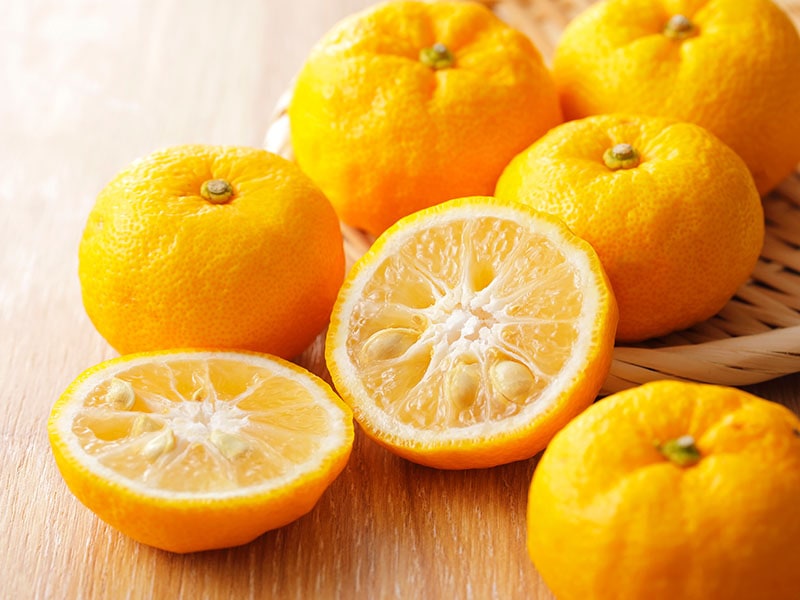
Yuzu is a famous citrus fruit with its origin in East Asia, particularly in central China and Tibet. After that, its popularity has spread to Japan, where you can find many Japanese-styled drinks made of yuzu which has a significant flavor.
Generally, yuzu looks quite similar to grapefruit but small and has no-wrinkled skin. They can turn green (immature) to yellow or orange (mature). Their flesh has many seeds and a fruity-citrus flavor used in various cooking recipes.
You can use their juice to make salad dressing or sauces. For example, in traditional Japanese foods, the locals use the aromatic zest, like how you use lemon to prepare dishes. Japanese also use yuzu to make liquor and wine.
Nutrients: Have a small amount of vitamin E, magnesium, zinc, niacin, calcium, riboflavin, iron.
Season: The best time is in the middle of winter.
How To Eat: Their juice or zest are ideal for salad dressing or sauce. Or you can make alcoholic drinks with whole fruits. Not suitable for eating raw due to its high acidity.
9. Buddha’s Hand (佛手 – Fóshǒu)
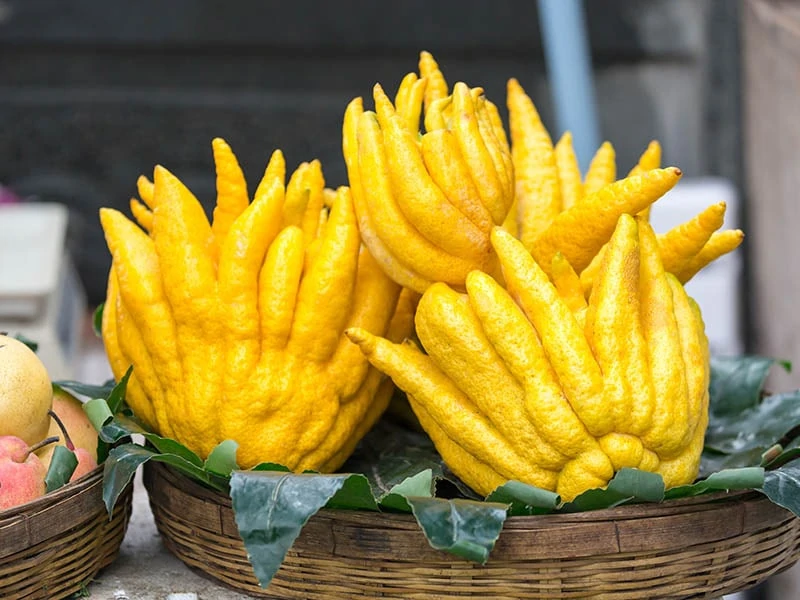
Buddha’s hand fruit is a citron fruit – a large citrus fruit with thick and bumpy peel. It also has a distinct look that you can easily recognize. They start with a small oblong shape then extend into finger-like segments with a yellow color when mature.
Their appearance depends on the cultivars; some have “open-hand” looks, whereas others have “close-hand” appearances. Though they have no pulp or juice, Buddha’s hand has a nice scent of lemon and lavender with a bitter-sweet tone.
Buddha’s hand is from South or East Asia, and China is one of the most widely-cultivated places of this fruit. Budda’s hand is also a favorite Vietnamese fruit. People use them to make sweet and savory dishes, alcoholic drinks, or even medicine in these countries.
They also perform excellently in a nice perfumery for personal cloth or rooms in China and Japan. It is also a symbol of good luck, longevity, and happiness. You can find Buddha’s hand fruit in many special religious events in Buddhist temples, especially on New Year’s Eve.
Nutrients: Might not have too many nutrients but is high in vitamin C, dietary fiber, and calcium.
Season: Available in the fall through winter (from late October to January). The peak season is around November.
How To Eat: The rind is perfect for salad, sweet or savory meals, and even drinks.
Let’s see how Buddha’s hand appearance would change from unripe to mature.
Awesome Multiple-classified Fruits In China Market
But first, what are multiple fruits? Unlike berry-like fruits, multiple fruits come from more than 1 flower or a cluster to develop a larger fruit. So let’s begin this category with an obvious example – pineapple.
10. Pineapple (菠萝 – bōluó)
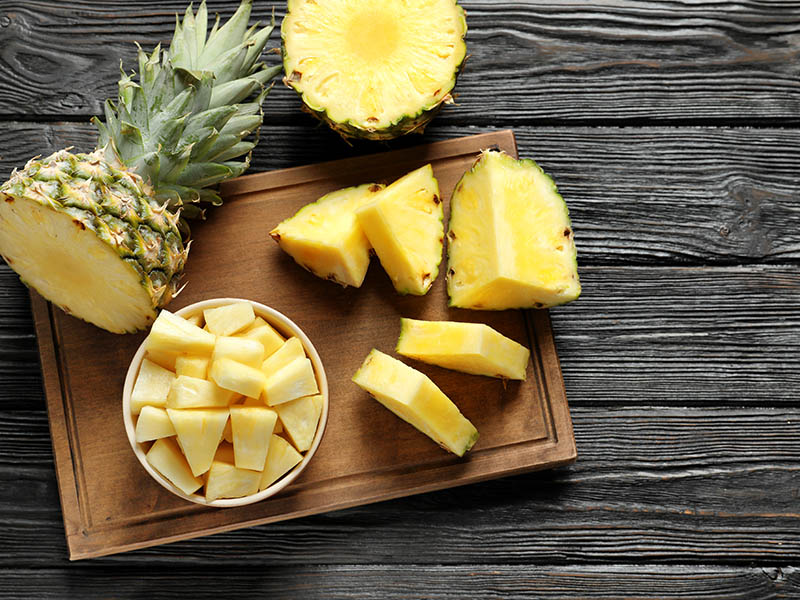
In China, pineapple is one of the most important tropical fruits, with the production of 780,000 to 920,00 tons in a decade. And 4 key cultivation regions of pineapple in this nation are Hainan, Yunnan, Guangdong, and Guangxi.
Interestingly, the origin is not from Asia. People recorded the first root of pineapple between Paraguay and southern parts of Brazil. In 2020, the largest pineapple producers were the Philippines, followed by Costa Rica, Brazil, Indonesia, and China.
In short, pineapples – a non-round fruit, have tough, rough skin with various spines. But do not be intimidated by its look as their flesh is sweet and tart with vibrant yellow color. They can be consumed raw or mixed in salads, smoothies, juices, or other savories.
Nutrients: Several vitamin B, vitamin C, fiber, manganese, and other minerals.
Season: Peak season from March to July, but they are available year-round overall.
How To Eat: Remove the peel, then cut fruit into slices. You can eat them with your hand or use utensils.
Follow this instruction to learn 4 ways to cut a pineapple.
11. Fig (无花果 – wúhuāguǒ)
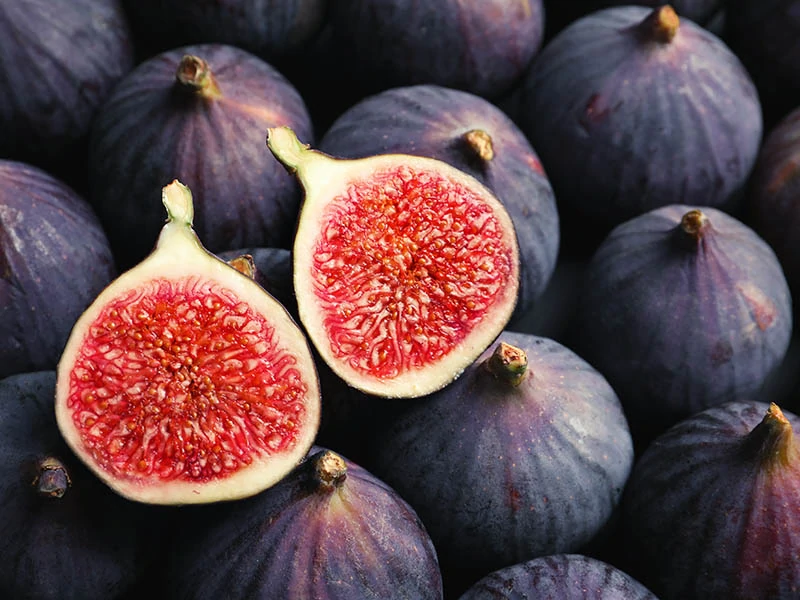
Fig plant is a small tree that produces tear-shaped fruits with brown or purple skin. They originated in Western Asia, but the first cultivated tree was in Egypt. On the other hand, the Chinese started to know about them about 1,000 years ago, but they have become more famous recently.
The fig supply in China is growing rapidly to provide the consumers with all-year availability. Fresh figs are quite small, with light pink flesh consisting of many tiny edible seeds. People can have various ways to cook them, like roasting, baking, broiling, etc.
They also have a mild sweetness with a subtle note of berry. However, their skin is slightly chewy, along with their soft flesh. The riper they are, the softer they will be. If you want to try dried figs, expect some denseness, chewiness, and stickiness of them too!
Nutrients: Good source of Vitamin A, C, calcium, iron, magnesium, and potassium.
Season: From mid-July to late November in Zhejiang province, or from December to July in Hainan.
How To Eat: Best enjoy raw and fresh as the whole fig is edible.
12. Jackfruit (菠萝蜜 – bōluómì)
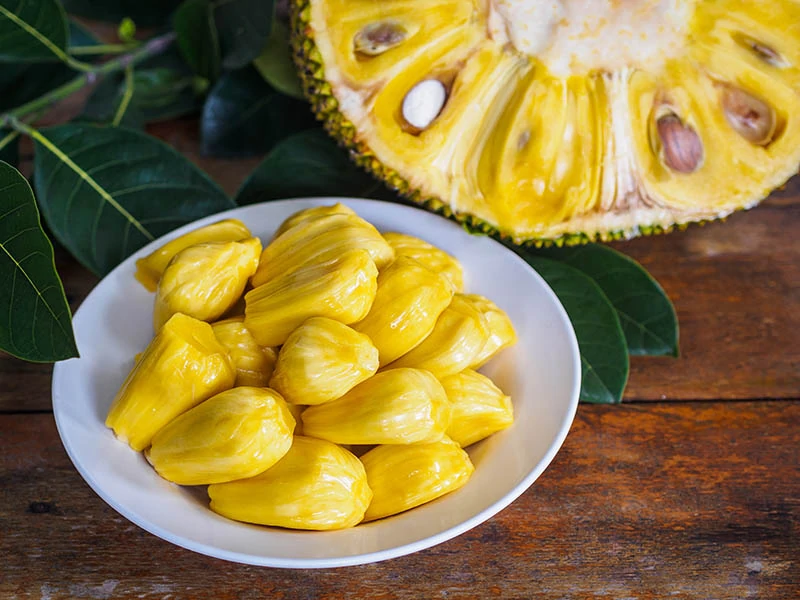
Another popular fruit in China is jackfruit, especially in Southern China. Basically, they are large-sized fruit that can reach 120 pounds per fruit. And as they are a product of hundreds to thousands of flowers, jackfruit is also multiple fruit.
Native to somewhere in Southern India, Malaysia, the Philippines, Indonesia, and Sri Lanka, jackfruits provide many incredibly sweet bulbs inside them. Moreover, ripe ones have a subtle taste of banana or pineapple, making them a perfect option to enjoy fresh.
The texture of them is like shredded meat, like pulled pork. That’s why people also refer to them as “vegetable meat”.
In reality, you can eat unripe fruits too. They might have less flavor than ripe ones, but they can be a perfect ingredient in various savories, for example, simple Indian food with deep-fried unripe jackfruit.
Nutrients: Contain vitamin C, antioxidants, fiber, potassium, calcium, and iron.
Season: Depending on the climate, however, they are generally ripe from March to June, June to August, or April to September in Asia countries.
How To Eat: Enjoy them fresh when ripe. But you can also add them to desserts. Unripe fruits can be cooked in savories.
If you are unfamiliar with opening a jackfruit, check here to learn new tricks.
13. Mulberries (桑葚子 – sāng shèn zǐ)
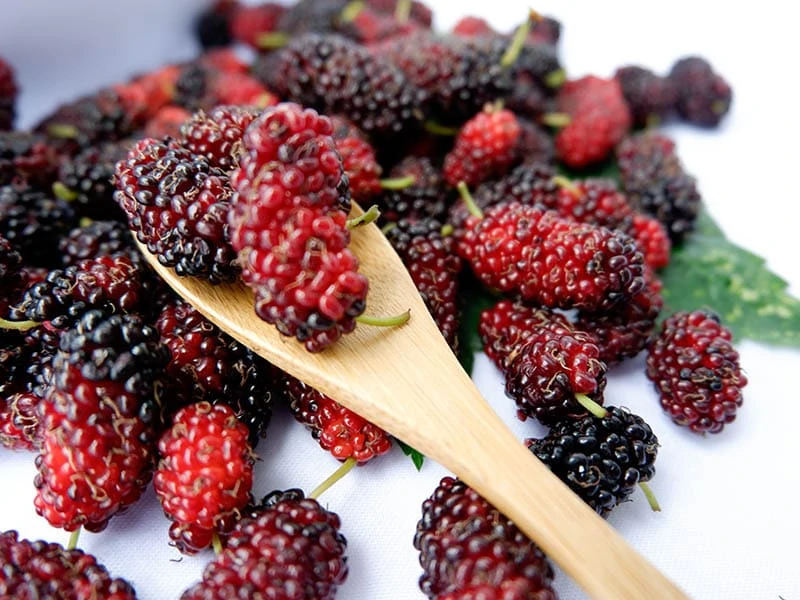
It is quite surprising to know the origin of mulberry in Central China and India from a long time ago. In China, the native has grown them more than 4,700 years. Today, they are also widely grown in Mexico, the USA, Iran, Australia, and more.
People also call them white mulberry or silkworm mulberry since they are commonly cultivated for feeding silkworms in making commercial silk. And those that you find in the markets are their ripened edible fruits.
If your favorite fruit is blackberry, you would love mulberries as well because these 2 fruits share similar tastes. They are a good balance of tart and sweet flavor with a light woody hint.
Mulberries are so juicy that you can eat them raw or make wine. Dried mulberries are also an ideal snack for everyone.
Nutrients: antioxidants, fiber, vitamin C, E, K1, Iron, and potassium.
Season: Available during the fall in Chinese (and harvested from mid-June to August).
How To Eat: Eating them fresh is the best way, but please avoid green ones as they are still immature.
Exotic Chinese Fruits Belong To Berry Fruit Category
Berry-like fruits have fleshy pulps without a big stone in the middle. And they are developed from a single flower. Below are 7 simple yet wonderful fruits in China. Some of them might be challenging to find in the USA, so keep scrolling down to find out!
14. Kumquat (金橘 – jīn jú)
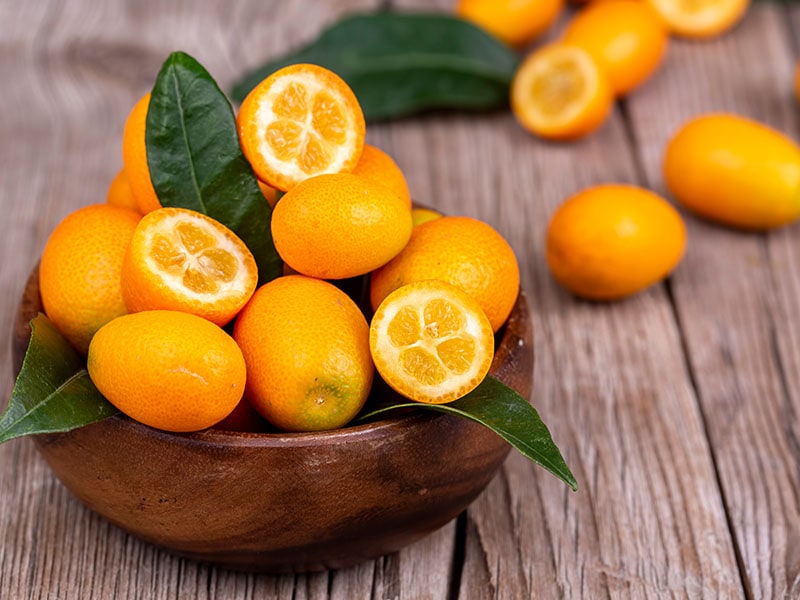
China is one of the leaders in supplying kumquat globally. Their origin can be traced back to the 12th century in China, then spread to other countries like Taiwan, Japan, and South America. Nowadays, Jiangxi province is one of the biggest producing regions of kumquat in the country.
If you have a chance to visit China during their New Year, you can see various small kumquat pot in the locals’ houses. Kumquat derives from the word “gam gat” in Cantonese, which means gold and luck. Therefore, it has become a symbol of prosperity and wealth.
Their fruits are like small oranges, but their shapes might be round or oval, depending on their varieties. You can enjoy them raw, or serve them in salads. Chinese also use them to make candied kumquat – a flavorful component in many Chinese-authentic desserts, prepare jelly, and marmalade.
Nutrients: High in Vitamin C, have a fair amount of vitamin A, fiber, and antioxidants.
Season: Peak months from February to March (but some variations might be from November to January or from December to April).
How To Eat: Can eat whole fruit without peeling if they are sweet. But you can turn them into refreshing juices, add to your salad, make jelly, or marmalade.
Salted kumquat is a good treatment for sore throat. So check this instruction to make some at home.
15. Kiwi (奇异果 – mí hóu táo) – National Fruit Of China
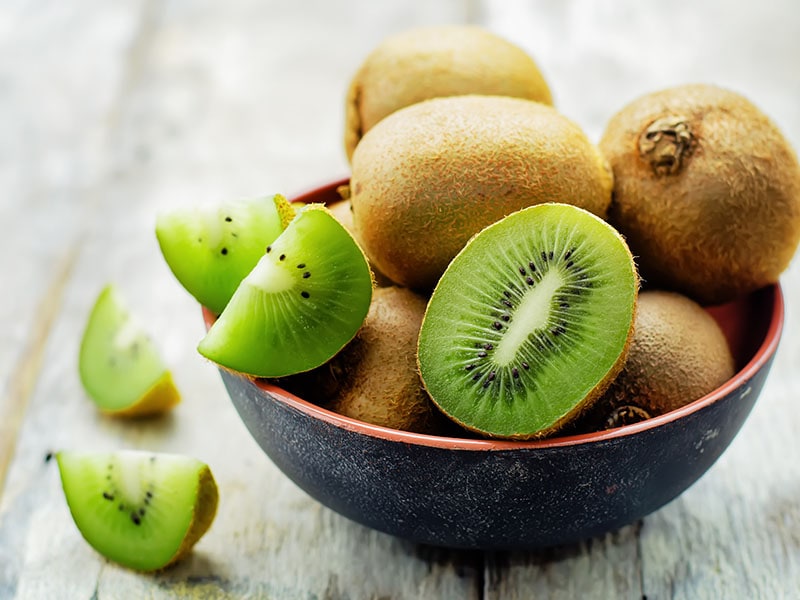
Speaking of the largest kiwi supplier, China used to be the biggest one with around 2.55 tons of kiwi production in the world in 2018, much higher than New Zealand – a country that many people mistake as the origin of this green fruit.
Despite their name, kiwi is native to China, particularly the central and eastern part of the country. They are well-known by another name as Chinese gooseberry. The first appearance of this fruit was from the 12th century in the Song dynasty.
They come in a fuzzy peel with light brown color and soft green or yellow flesh. There are numerous tiny black seeds in the middle, but you can consume them too!
In fact, it is really hard to describe the flavor of kiwi because they are mixed between pineapple, strawberry, and banana taste with a mild citrus note to release a nice tartness. The more mature kiwis are, the sweeter they tend to be.
Nutrients: Vitamin C, antioxidants, dietary fiber, iron, and carotenoids.
Season: September and October is harvest time in China
How To Eat: Slice fruit in half, scoop its flesh with a spoon to enjoy fresh
16. Wampee (红毛丹 – hóngmáodān)
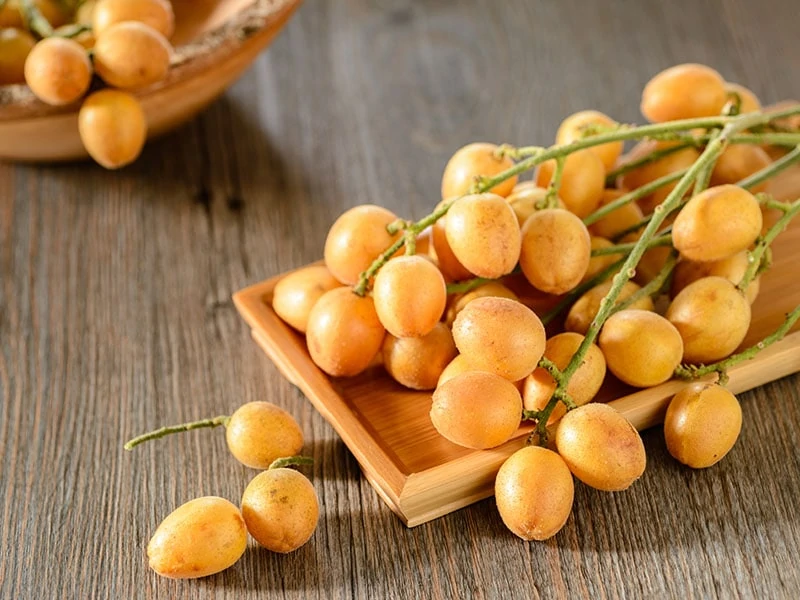
Wampee – another Southeast Asian fruit, is commonly grown in Southern China. In this country, wampee varieties are multiple with various forms, sizes, and flavors.
But overall, these tasty fruits with W as the first letter have a size that resembles a grape with fragrant citrus hints. Some of them can be sweet and subacid, while some are very sour. Plus, wampee trees can develop well in tropical and subtropical climates.
Wampee’s skin is thin and relatively tough, but you can still easily peel them to eat the flesh. Their pulp, however, does not come in 1 piece. They have 5 separate segments with yellowish-white or opaque white.
Besides China, you can buy them in other places like Malaysia, Indonesia, Vietnam, the Philippines, or even further countries like India, Hawaii, and Floria.
Nutrients: Vitamin B2, B3, C, potassium, and a small amount of calcium
Season: June to July in Southeast Asia, or in early fall (August to September) in the cool climate
How To Eat: Usually consumed raw, but they still can be an excellent component in various recipes.
This is an informative flavor description of wampee that you should not miss.
17. Passion Fruit (百香果/熱情果 – bǎixiāng guǒ)
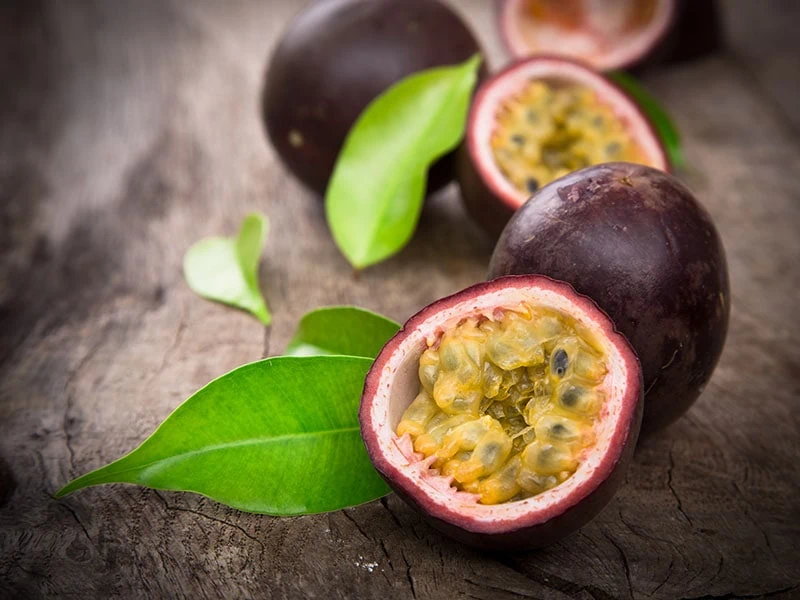
Though passion fruit is Brazilian-based fruit, they have recently increased its popularity in China. Indeed, passion fruits’ versatility is great as they can be eaten fresh, make drinks or sauces.
In China, they are best grown in tropical and sub-tropical areas like Guangxi, Hainan, Guangdong, and Fujian provinces. The color of these fruits ranges from purple to yellow, like those yellow passion fruit in the tasty Mexican fruit menu, and their sizes are also different.
They have thick waxy skin but will wrinkle when they reach maturity. These oval fruits are light orange-yellow juicy flesh with many tiny edible seeds. They also offer various health benefits as passion fruit is a good source of powerful antioxidants, vitamin A, and vitamin C.
Nutrients: Vitamin A, C, potassium, calcium, iron, magnesium, fiber, and antioxidants
Season: All-year availability, but the peak season is in warmer months.
How To Eat: Cut them in half and use a spoon to eat their flesh.
18. Goji Berries (枸杞子 – gǒuqǐzǐ)
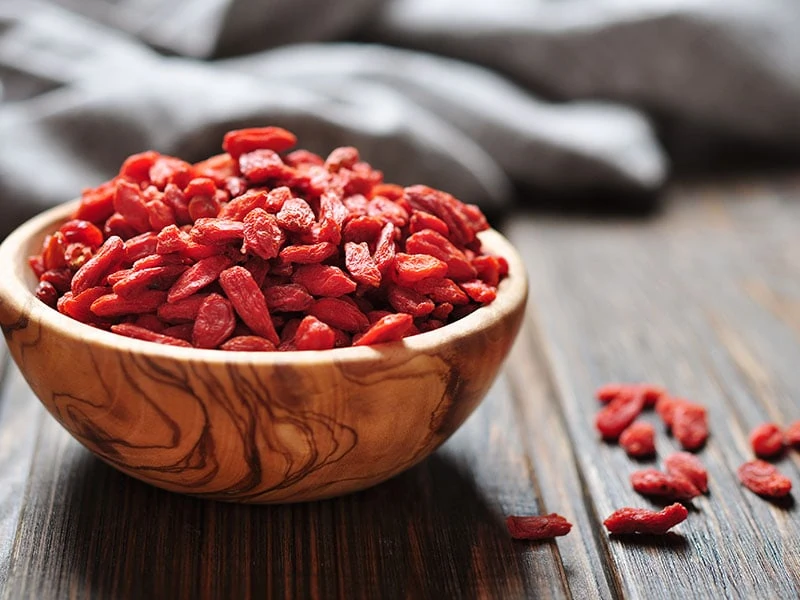
Goji (aka wolfberry) is an essential ingredient in many Chinese dishes and has appeared from at least the 3rd century AD in Asia. In reality, many people know it as a superfood for health or medical purposes.
They are tiny red fruits containing many vitamins and minerals like vitamin A, C, iron, fiber, and more. Besides their uses for medicine, they are normally dried and sold as a snack (similar to raisins).
These dried fruits taste a bit sour, like cherry with a cranberry note. You can either use them for your sweet or savory dishes. China is a leading supplier of goji berries in the world. And most of them come from Xinjiang and Ningxia provinces.
Nutrients: Good source of antioxidants, vitamins A, C, and carotenoids.
Season: The fruit starts to ripen in the fall,
How To Eat: Enjoy them as a fresh snack, or add them into your beverage, fruit salad, etc.
A short demonstration of collecting goji berries in the harvest season.
19. Persimmons (柿子 – shìzi)
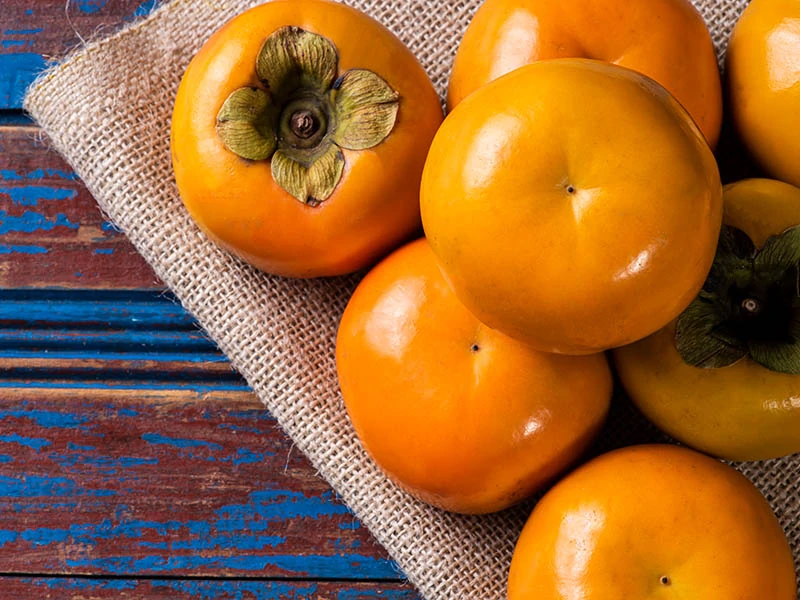
There are various species of persimmons, but Chinese, Oriental, and Japanese persimmons are the best commercial ones. With its origin in China, this country occupied 75% of persimmon production in the world in 2019.
However, they are usually considered berry-like fruit, but they are a berry fruit type in morphology. The trees start to produce fruits from late fall, and they can hold in the branches well until winter.
Based on the variations, the fruit color varies from yellow-orange to dark orange when ripe. But overall, persimmon flesh is sweet as it contains a high level of sucrose sugar. You can also feel its fibrous texture, or some version might taste a bit crispy or firm.
Besides eating them fresh, dried persimmons are a traditional snack in China, Japan, and Korea. For your more information, these dried fruits were the best gift to give to the imperial court.
Nutrients: Include vitamin A, B, C, manganese, potassium, tannins, and flavonoids.
Season: From October to January
How To Eat: Watch them before eating, remove its leaves on the top, then you can cut them like how you cut an apple and enjoy (their skin is also edible).
Check here for 4 persimmon variety comparisons.
20. Star Fruit (杨桃 – yángtáo)
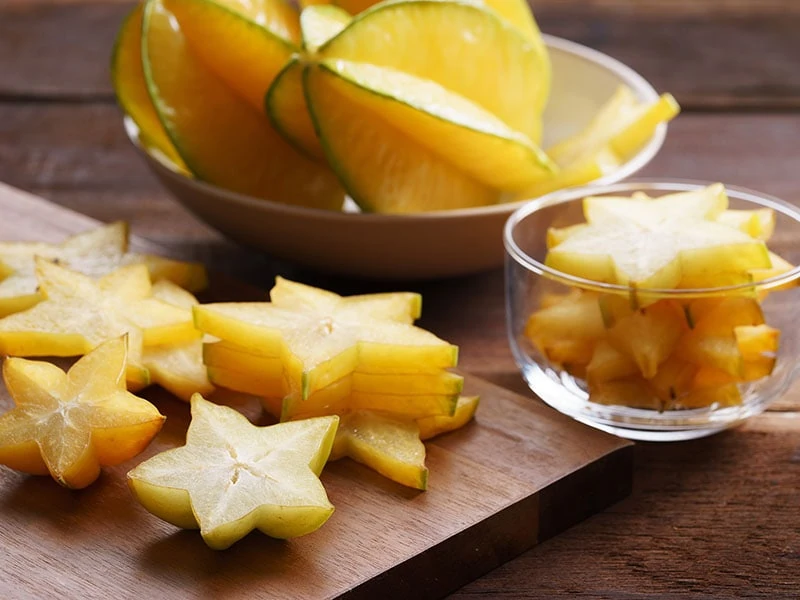
Start fruit (or carambola) has a special shape with 5 (or 6) running-down ridges and looks like a star when they are cut. That’s why people refer them to star fruit.
It is a tropical Southeast Asia fruit, but you can see them in South Pacific, East Asia, the Caribbean, Brazil, or some tropical region in the world.
Star fruit looks quite waxy with thin yellowish-orange skin. Under the skin is super juicy and crispy flesh when ripe. In fact, their texture is quite similar to grapes in terms of consistency.
They are best to consume right after ripening with yellow skin. The overripe ones might turn brown with a bland taste and soggy texture.
Nutrients: Vitamin B5, C, fiber, calcium, sodium, copper, magnesium, potassium, and protein
Season: Harvest from June to February
How To Eat: Consume star fruit raw. You can eat a whole fruit or cut them into smaller pieces. They are also good for garnishing or preserving purposes.
And Other Must-Try Fruits In China That You Should Know
Finally, the following 5 fruits will offer you a more colorful picture of Chinese fruits with many insightful details. So do not skip it!
21. Dragon Fruit (火龙果 – huǒlóngguǒ)
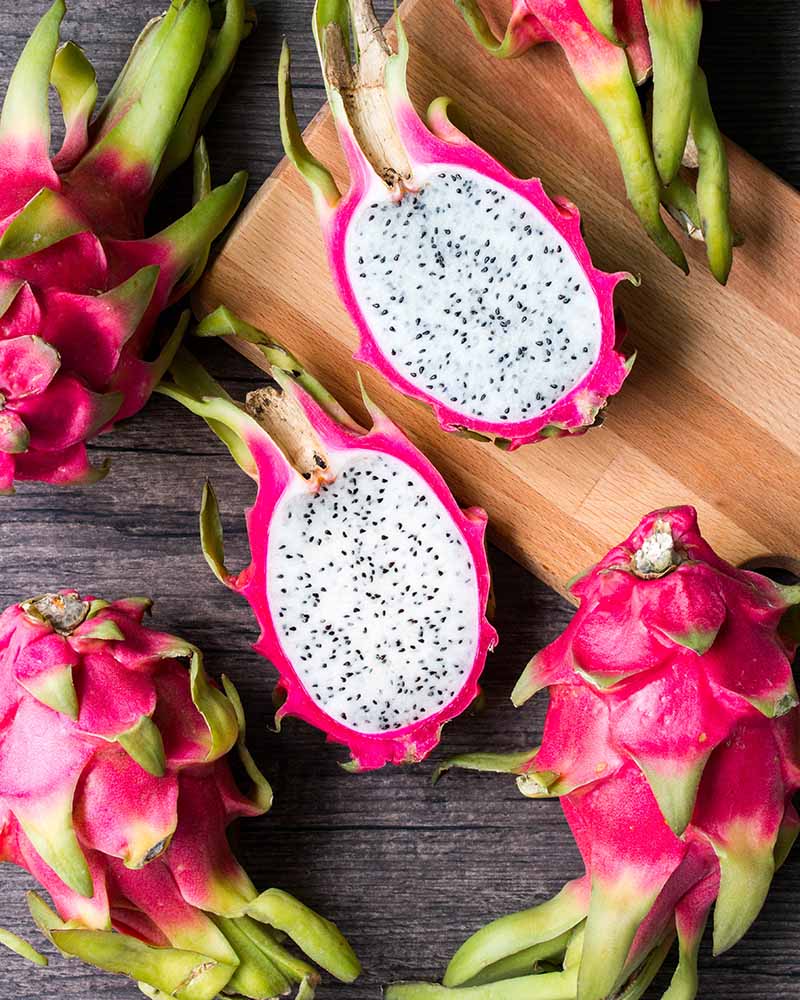
Let’s talk a bit about the root of the name “dragon fruit”. First, you might easily note a dramatic-looking fruit with reddish-pink color and several leafy green scales. These scales resemble a dragon’s scales, and that’s why they have this name – dragon fruit.
Surprisingly, it is not a Chinese-native fruit. Dragon fruit is a cactus fruit from Mexico, Costa Rice, northern South America, etc., where the natives refer to them as Pitahaya.
Besides the above appearance characteristics, dragon fruits have pear-shaped or oval forms. But under the thick skin is a mildly sweet flesh with numerous edible black seeds. Their flesh texture is similar to ripe kiwi, which is soft and juicy that you can easily enjoy with a spoon.
Nutrients: Include high levels of vitamin B1, B2, B3, C, iron, phosphorus, and calcium
Season: In summer (June to September)
How To Eat: Best to enjoy fresh. Cut them into smaller pieces, enjoy it without skin. You can also cut them in half and use a spoon to scoop the flesh.
22. Durian (榴莲 – liúlián)
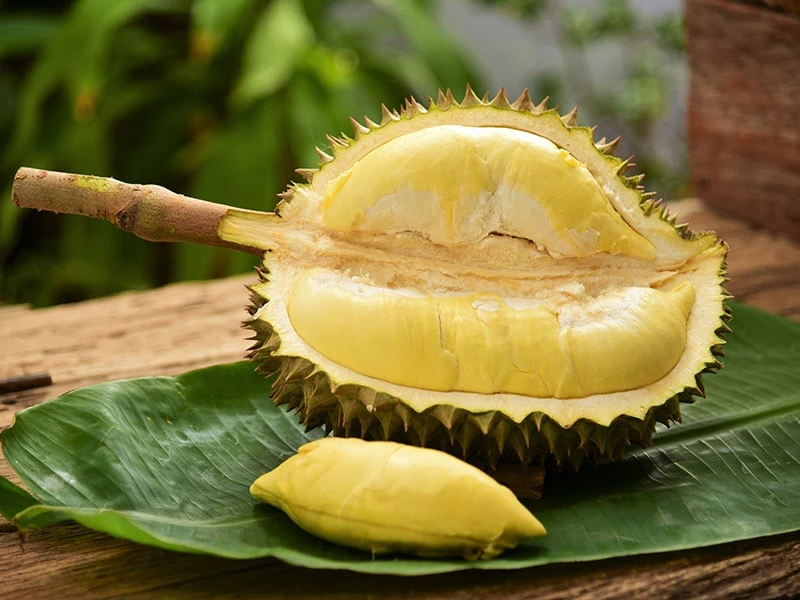
Many of you would run away from durian because they are described as “the smelliest fruit on earth”. But do you know durian is a king of fruit, especially in the list of Malaysian fruits? Indeed, Asians love durian, and there are many reasons for it.
Though they have a pungent smell, when you start to enjoy it, you can feel the strange mixture of creaminess, sweetness, and savoriness in 1 bit. Of course, it might need a certain time to get used to its smell, but it would be a miss if you do not try durian when you travel to Asia, like China.
However, China is an importing country of durian, but they are also a significant durian consumption. The durian price in the country is also high due to its increasing popularity.
Nutrients: Contain a high level of fiber, various vitamin B, C, potassium, and antioxidant compounds
Season: Have 2 main seasons (summer season is from May to August, and the fall season is from late December to March)
How To Eat: Best suited to eat raw. Need to use a sharp knife to open the durian shell.
Is it true to claim durian as the world’s smelliest fruit? Click here to find the answer.
23. Monk Fruit (罗汉果 – luóhànguǒ)
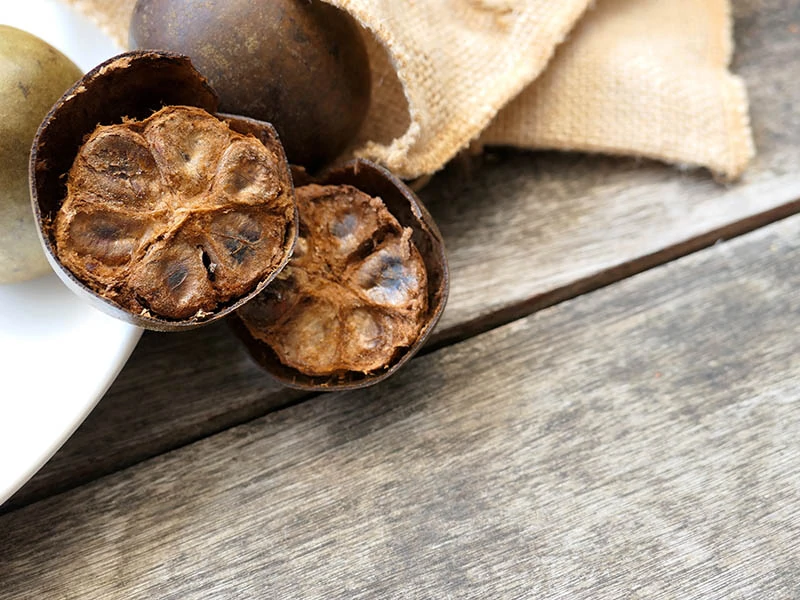
Another Chinese-originated fruit with a long history is monk fruit, also known as luohan guo. They are mostly found in the south of China, like Guangxi, Guangdong, Hanan, Jiangxi, and Guizhou provinces.
It is not a wild tree and prefers a warmer climate. Moreover, it would take a lot of time to grow monk fruit from its seeds. The fresh monk fruit is green and round, but people rarely use them in fresh form.
Instead, they will dry these fruits to turn them into brown ones. And they use the fruit extract to create a sweetening agent, which is 250 times higher than normal sucrose sugar.
The human also uses it for medicinal purposes. If you can visit any Chinese herbal shop, you can find them there as people think monk fruit can treat sore throat and cough.
Nutrients: Vitamin C, antimicrobial and antioxidant properties
Season: Mainly in fall but dried monk fruits are available all year
How To Eat: Not recommended to eat raw, but dried fruits can pair well with your drinks as they can replace any sweetening agent
Monk fruit, interestingly, is a natural sweetening fruit with no calories.
24. Chinese Pear (中国梨 – zhōngguó lí)
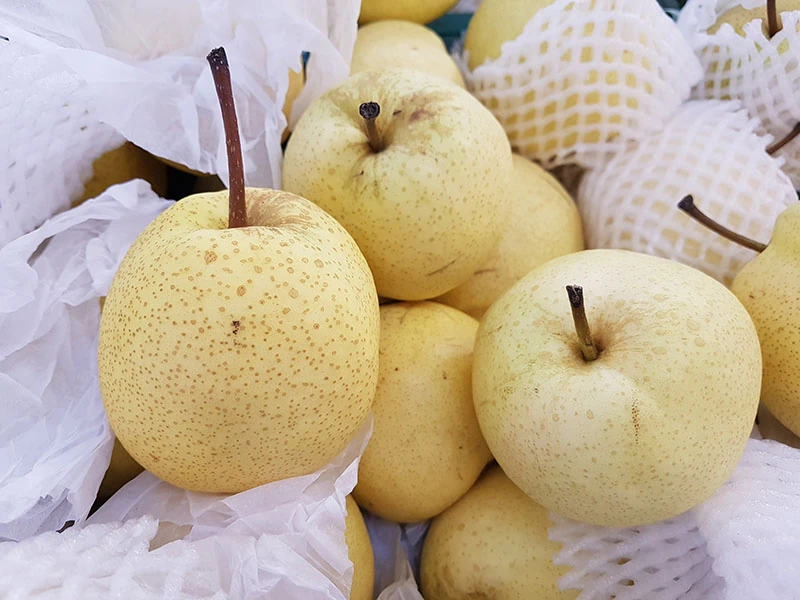
Chinese pears, or its wider name – Asian pear, is an East Asian native fruit with many different cultivars. But regardless of their varieties, these pears have a high level of water and crispy texture that make them better to serve fresh rather than using for baked goods or making jams.
These fruits are relatively large with semi-rough skin and firm surface. And the best part is their flesh – super juicy and crunchy, along with its sweet-tart flavor and floral notes. You can enjoy them peeled or unpeeled, and they are best suited for eating fresh.
They can be a twist in your salad dishes as well. Chinese also steam or poach them to make hot pears – a best-liked Chinese street food, especially in winter months. And what’s better, if you store them well, they can last for several weeks at room temperature, or even more in cold places.
Nutrients: Potassium, fiber, copper, vitamin C, and vitamin K
Season: Might be available from early summer in some areas. But the peak season would be from fall to winter.
How To Eat: Eat them fresh with or without the peel. Eat the whole fruit around the core. Or you can cut them into slices.
25. Mangosteen (山竹 – shānzhú) – Tropical
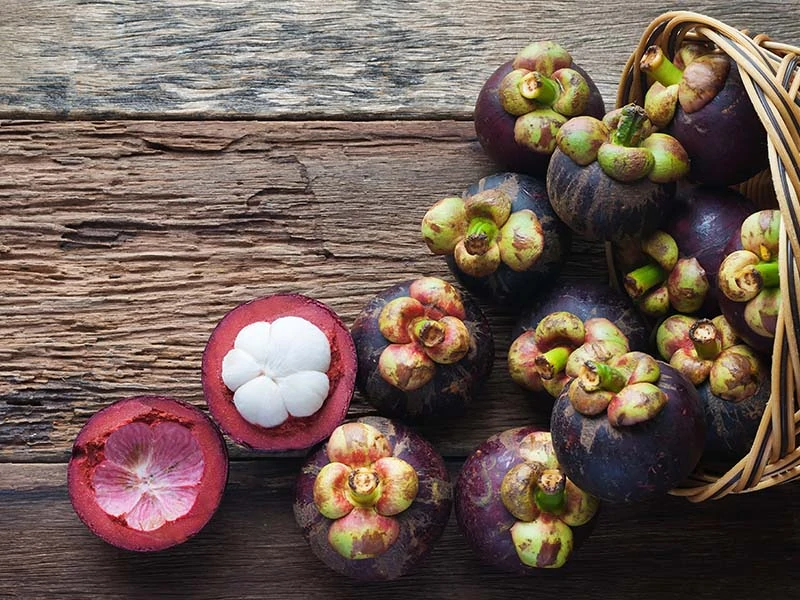
Asia is heaven with many nice tropical fruits, and mangosteen is one of them. You can easily spot them in many Southeast Asian regions. They also come with an easy-to-recognize appearance, including a purple or red thick peel and white pulps inside.
They taste sweet, juicy, and tangy. They also have a few almond-sized seeds. And as durian is the “king of fruit”, mangosteen is claimed as “queen of fruit”. Indeed, in Chinese therapy, people believe mangosteen can cool down the heaviness of durian.
Sadly, it might be hard to find them in Western countries. Before 2007, people were not allowed to import fresh mangosteen to the USA. But if possible, you can find them in Asian markets, or some canned mangosteen would be acceptable for you to enjoy.
Nutrients: Rich in antioxidants, vitamin B9, vitamin B1, B2, and C with other minerals like manganese, magnesium, and copper
Season: 2 main seasons (from July to October and from April to June)
How To Eat: You can enjoy them fresh by cutting their skin (but not too deep) to open it. Enjoy the white flesh and remove seeds (if any). Or mix them with other fruits to make fruit salads, or make juice.
This is a comprehensive review of mangosteen flavor.
What Is Your Experience With These Chinese Fruits?
Some Chinese fruits are exported to various places in the world so you can enjoy them right in your country. However, some might be a bit hard to find in your nearby market. However, after reading this post, I guess you all have a comprehensive view of these wonderful Chinese fruits.
And it would be much more meaningful to me if you could give me your high ranking or a share if you love this post. And please feel free to share your point of view about these fruits in the comment part. Thank you so much!
